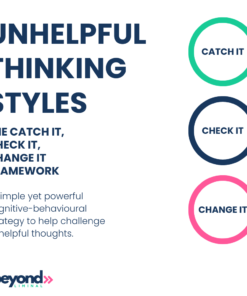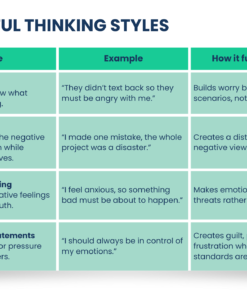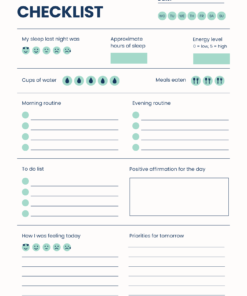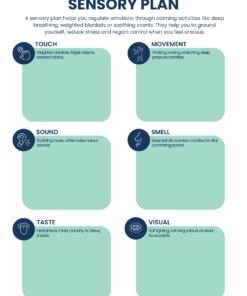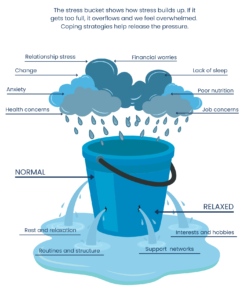Anxiety, Occupational Therapy
Understanding anxiety and how it affects everyday life
Understanding the worry monster: how occupational therapy can help you manage anxiety
Anxiety is a feeling that most of us will experience at various points in our lives. It’s that familiar flutter of worry before a significant event, the nervous energy that bubbles up when we’re stepping into the unknown, or perhaps the unease that settles in when facing a challenging situation. But for some individuals, anxiety transcends these occasional feelings. It can become a persistent, unwelcome companion that starts to exert a significant influence, making even seemingly simple daily tasks feel like monumental hurdles.
As an occupational therapist, I have the privilege of working alongside people who experience anxiety as a pervasive challenge in their everyday lives. My role is to collaborate with them to discover practical, tangible ways to understand and manage their anxiety symptoms—empowering them to live their lives on their own terms, to engage in the activities that are meaningful to them without anxiety holding them back. But before we delve into the specific ways occupational therapy, or OT, can offer support, let’s take a closer look at the nature of anxiety itself.
What is anxiety: our body’s alarm system
Anxiety, at its core, is our body’s natural and often helpful response to perceived stress or threat. It’s an ancient protective mechanism designed to keep us safe, triggering our innate fight-or-flight response when we sense danger—whether real or imagined. Think of it like a built-in alarm system designed to alert us to potential harm. However, sometimes this alarm system becomes overly sensitive or miscalibrated, kicking in even when there’s no genuine threat present. This might occur in seemingly ordinary situations, like making a phone call, leaving the familiar comfort of home, or venturing out to try something new.
How anxiety casts a shadow over daily life
Anxiety doesn’t just reside in our thoughts and feelings—it has a tangible impact on virtually every aspect of our lives. It can significantly impair our ability to concentrate and focus at work or during studies, making tasks that once felt straightforward suddenly feel insurmountable. It can lead us to withdraw from the connections and support of our friends and family, as social interactions become sources of worry. Furthermore, anxiety can make everyday tasks that most people take for granted, such as grocery shopping, cooking a simple meal, or even managing personal finances, feel overwhelmingly difficult. In an attempt to cope with these intense feelings, some individuals may develop specific routines or habits that provide a sense of control or temporary relief, but these coping mechanisms can sometimes inadvertently worsen anxiety in the long run, creating a cycle of avoidance and fear.
For instance, the act of actively avoiding crowded places might bring a sense of immediate short-term relief from social anxiety, but over time this avoidance can paradoxically amplify the fear associated with leaving the house, making future outings feel even more daunting and challenging. Similarly, the pursuit of perfectionism – constantly checking and rechecking work or tasks to ensure they are “just right” – can lead to significant exhaustion, burnout and an unhealthy level of self-criticism, further fuelling anxiety.
Symptoms of anxiety
For some, anxiety is fleeting. For others, it lingers, making everyday life feel like an uphill battle.
When anxiety becomes overwhelming, it can make things like going to work, socialising, or even just getting out of bed feel impossible.
-
Racing thoughts and constant worry
-
A pounding heart, shortness of breath or dizziness
-
Trouble concentrating or making decisions
-
Avoiding certain places, people or situations
-
Feeling exhausted but struggling to relax
How occupational therapy can be your ally
This is precisely where the unique and practical approach of occupational therapy comes into its own. At its heart, OT is all about enabling people to participate fully in the activities, or “occupations”, that are meaningful and important to them, regardless of the challenges they may be facing, whether those challenges are physical, emotional, or cognitive like anxiety. When working with someone who experiences anxiety as a barrier to living a full life, an occupational therapist might employ a range of strategies, including:
Identifying specific triggers and develop personalised coping strategies
An occupational therapist will work collaboratively with you to understand the specific situations, thoughts or feelings that tend to trigger your anxiety. Once these triggers are identified, they can help you develop individualised coping strategies that are tailored to your specific needs and circumstances. This might involve learning techniques like distraction methods, cognitive reframing or developing a personal anxiety management toolkit.
Breaking down overwhelming tasks into smaller, more manageable steps
Anxiety often makes tasks feel enormous and insurmountable. An occupational therapist is skilled at breaking down these overwhelming tasks into smaller, more manageable steps, making them feel less daunting and more achievable. Think of it like climbing a staircase; each individual step is much easier to tackle than the entire flight at once. This approach builds a sense of accomplishment and reduces feelings of overwhelm.
Introducing calming techniques like breathing exercises or sensory strategies
Occupational therapists can teach you a variety of calming techniques to help regulate your anxiety response in the moment. This might include specific breathing exercises, mindfulness techniques, or the use of sensory strategies such as engaging with calming textures, scents or sounds to help ground you and reduce feelings of anxiety.
Supporting people in gradually facing situations they find difficult
Avoidance as a coping mechanism can reinforce anxiety. An occupational therapist can help you gradually and safely approach situations that trigger your anxiety using a technique called graded exposure. This involves starting with less anxiety-provoking situations and gradually working your way up to more challenging ones, building your confidence and reducing your fear over time.
Helping create routines that balance productivity with rest
Occupational therapists understand the importance of occupational balance for managing anxiety. They can work with you to establish daily routines that incorporate a healthy balance between productive activities, rest and leisure, ensuring you have adequate time for both accomplishment and recovery, which is crucial for managing anxiety levels.
Most importantly, occupational therapy takes a practical, hands-on approach
It’s not solely about talking about your anxiety, although that can be a part of the process. It’s fundamentally about doing. It’s about actively engaging in strategies and activities that help you manage your anxiety in real-life situations. The ultimate goal of occupational therapy in the context of anxiety is to help you regain confidence in your ability to navigate your daily life step by step, empowering you to live a life that is meaningful and fulfilling despite the presence of anxiety.
Take a small step towards a more balanced life now
If you’re looking for more personalised guidance and support in developing self-care habits that truly fit into your life, without the added pressure or guilt, consider exploring resources like training packages or even seeking support from an occupational therapist.
Taking that first step to seek support can be a significant move towards living life on your own terms.
Step into change: your toolkit for everyday wellbeing
Start your journey today with our self-help guides, resources and practical, supportive tools designed to help you take that first step towards positive, lasting change. Whether you’re building a routine, managing emotions or finding balance, there’s something here to support you.

